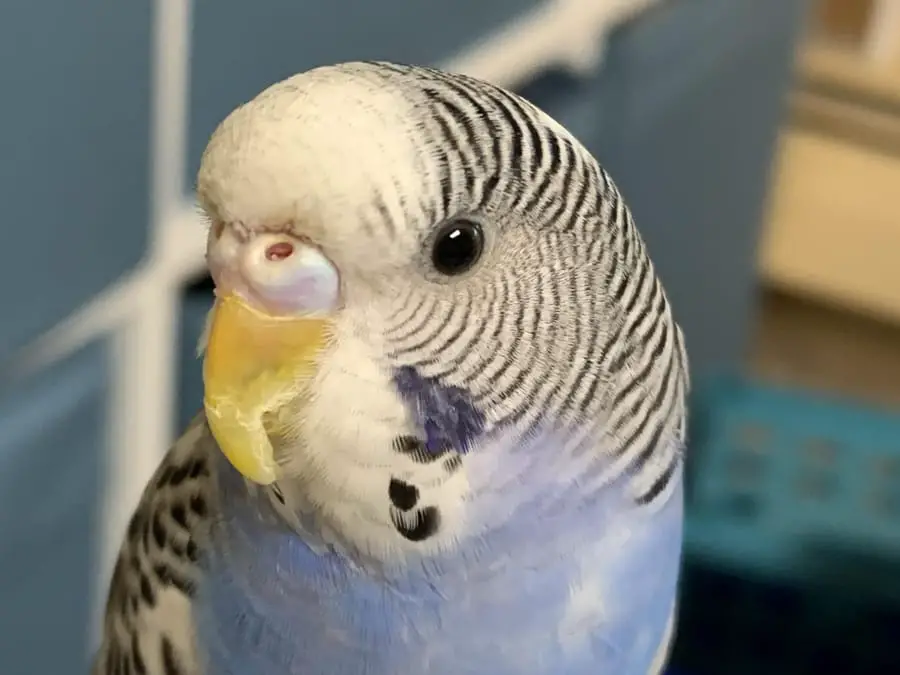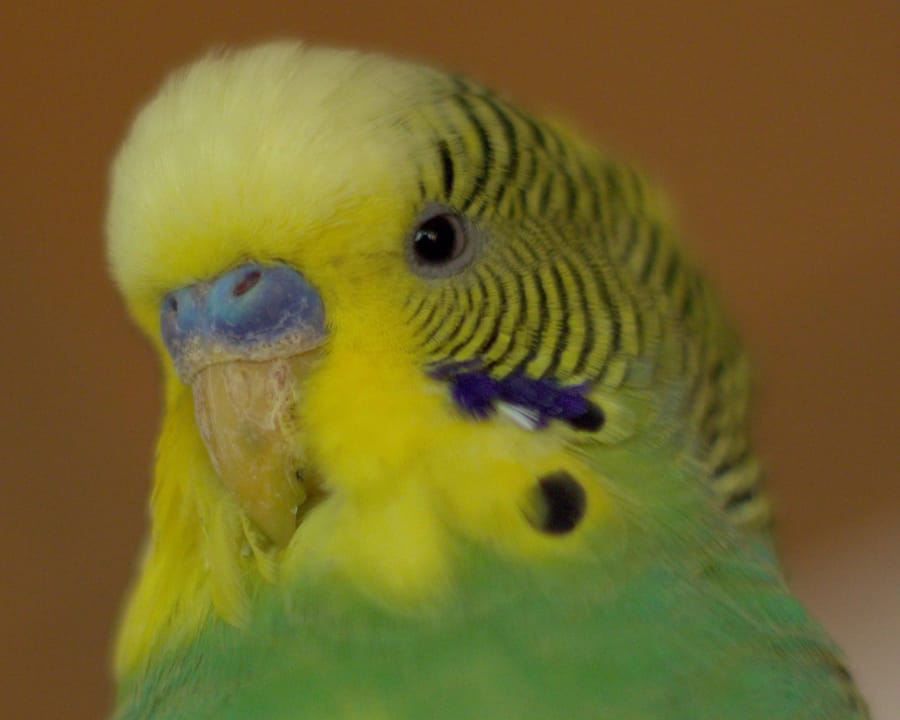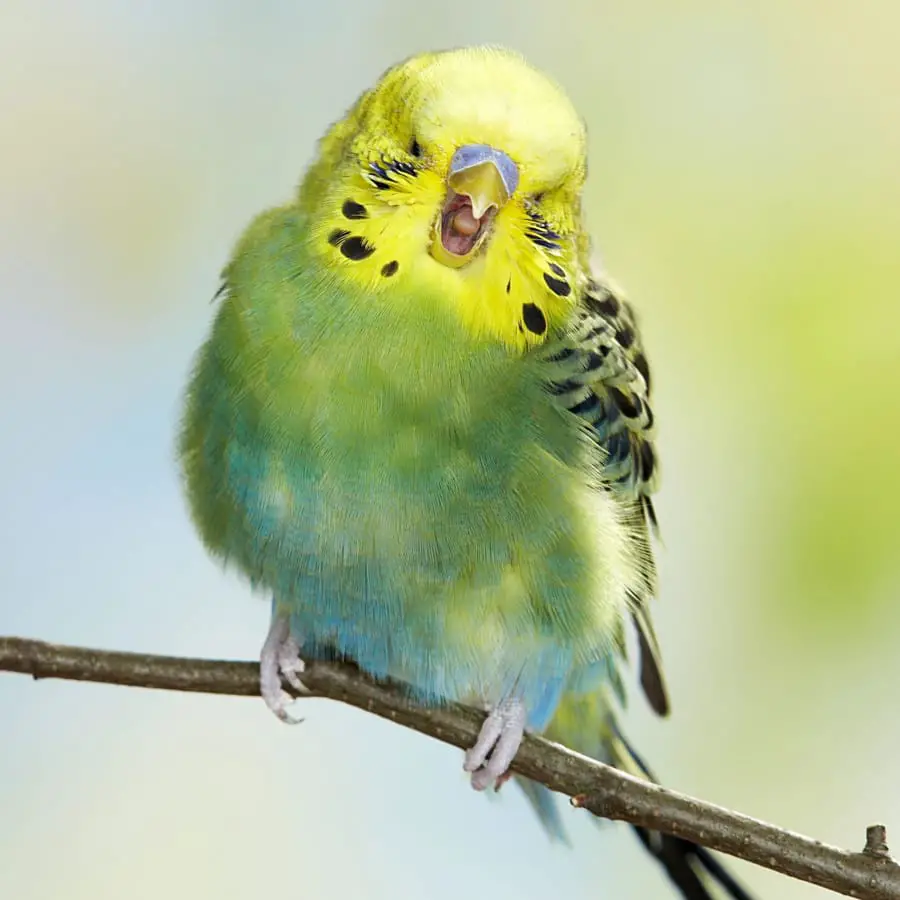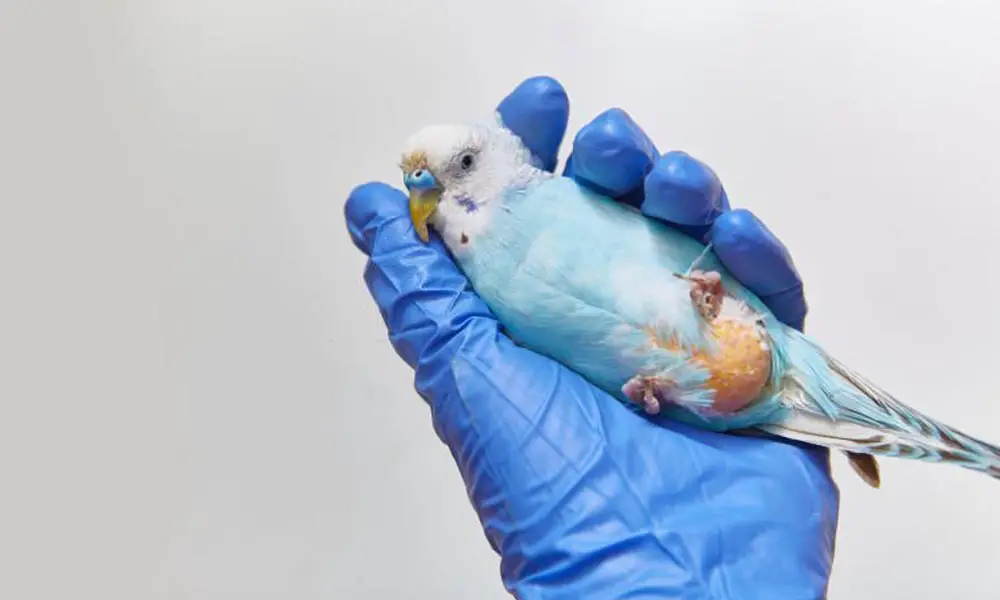Budgerigars, affectionately known as budgies, are cherished pets worldwide for their charm and lively personalities. While these small parakeets make delightful companions, they are not exempt from health challenges. Among the many concerns that can affect these avian friends, budgie beak problems stand out as a critical issue that every budgie owner should be well-informed about.
In this comprehensive guide, we will embark on a journey to explore the intricate world of budgie beak problems. We’ll delve deep into the causes, symptoms, and most importantly, the solutions available to ensure your beloved budgie’s beak remains healthy and trouble-free. Whether you’re a seasoned budgie enthusiast or a newcomer to the world of avian companionship, this guide is your invaluable resource for understanding, addressing, and preventing budgie beak problems. Let’s begin this exploration to keep your feathered friend’s beak in tip-top shape.

Contents
Types of Budgie Beak Problems
Budgie beaks often encounter four main problems: overgrowth, breakage, scaly beak and deformities. Below we will go over the causes and symptoms of these problems.
1. Overgrowth
Description: Overgrown beaks occur when a budgie’s beak grows longer than normal, making it difficult for the bird to eat and perform essential tasks.
Causes: Poor diet, lack of appropriate toys, or genetic predisposition.
Signs and Symptoms: Budgies struggling to eat, their beak is visibly longer than usual, and difficulty grasping objects.
2. Beak Breakage
Description: Beak breakage can occur due to accidents, such as flying into a hard surface or chewing on hard objects.
Causes: Accidental trauma, poor cage conditions, or aggressive behavior.
Signs and Symptoms: Obvious beak damage, bleeding, and visible pain in the budgie.
3. Scaly Beak (Cnemidocoptes pilae)
Description: Scaly beak, caused by a tiny mite known as Cnemidocoptes pilae, leads to the development of crusty and scaly growths on the beak.
Causes: Infestation by the mite.
Signs and Symptoms: White or yellowish scales on the beak, discomfort, and potential disfiguration if left untreated.
4. Beak Deformities
Description: Beak deformities can be congenital (present at birth) or develop over time, resulting in abnormal beak shapes.
Causes: Genetic factors, malnutrition during development, or accidents.
Signs and Symptoms: Irregular beak shape, difficulty eating, and potential difficulty grooming.

Common Causes of Budgie Beak Problems
Understanding the underlying causes of budgie beak problems is essential for prevention and effective management.
- Genetics: Some budgies may inherit a predisposition to beak problems. Responsible breeders work to minimize such genetic issues, but they can still occur.
- Diet: Diet plays a crucial role in budgie health. A lack of essential nutrients, such as calcium, vitamin D, and protein, can lead to beak problems. Budgies should have access to a balanced diet consisting of pellets, fresh vegetables, and occasional treats.
- Injury: Accidental injuries, like collisions with cage bars or flying into objects, can result in beak breakage. It’s important to ensure that your budgie’s cage is safe and free of hazards.
- Disease: Certain diseases, such as mites (Cnemidocoptes pilae in the case of scaly beak) or respiratory infections, can manifest as beak problems. Regular vet check-ups can help detect and treat underlying health issues.
Typical Signs and Symptoms of Budgie Beak Problems
Recognizing the signs and symptoms of beak problems is crucial for early intervention and treatment.
- Budgie’s difficulty in eating
Budgies with beak problems often struggle to grasp food or have trouble breaking it down. You may notice a reduction in their appetite or weight loss.
- Changes in budgie’s beak color
Abnormal changes in beak color, such as a darkening or reddening, can indicate underlying issues. In particular, beak discoloration to brown is a warning sign that should not be ignored.
Injury or overgrowth can make it difficult for budgies to make sounds. In this case, you will see the budgie trying to move its beak but not making any sound. If you observe budgies every day, you will easily recognize their silence. This is an important sign that the budgie’s beak has a problem.
- Budgie’s bleeding
Beak injuries can lead to bleeding. If you observe bleeding from your budgie’s beak, it’s essential to address the issue promptly to stop the bleeding and prevent infection.
- Budgie’s visible pain or discomfort
Budgies in pain may exhibit changes in behavior, such as increased irritability or a reluctance to eat or groom themselves.
Treatment Options for Budgie Beak Problems
The treatment for budgie beak problems depends on the specific issue diagnosed by the veterinarian. Here are some common treatment options:
- Beak Trimming
For budgies with overgrown beaks, a veterinarian can trim the beak to a proper length. This procedure is safe when performed by a skilled avian vet. Attempting to trim a budgie’s beak at home can lead to injury.
- Medications
If the beak problem is caused by a disease or mite infestation, the vet may prescribe medications or treatments to address the underlying issue. Follow the vet’s instructions carefully.
- Dietary Adjustments
For budgies with diet-related beak problems, the vet may recommend dietary changes. This could include adding more calcium-rich foods to their diet or switching to a specialized pellet formula.
- Supportive Care
Budgies recovering from beak problems may need additional care at home. This can involve hand-feeding soft foods, keeping the cage clean to prevent infection, and providing a stress-free environment.
- Surgery (in severe cases)
In extreme cases of beak deformities, surgery may be necessary to correct the issue. This is typically a last resort when other treatments have been unsuccessful.

Preventive Measures from Budgie Beak Problems
Preventing budgie beak problems is key to ensuring your feathered friend’s long-term health and well-being. Here are some preventive measures you can take:
- Balanced Diet
Provide a well-balanced diet rich in nutrients, including high-quality pellets, fresh vegetables, and occasional fruits. Consult your vet for dietary recommendations specific to your budgie’s needs.
- Appropriate Toys and Chews
Offer suitable toys and chews that encourage natural beak wear. Safe and stimulating toys can prevent beak overgrowth.
- Regular Vet Check-ups
Schedule regular check-ups with an avian veterinarian to catch and address any health issues early, including beak problems.
- Safe Cage Environment
Ensure your budgie’s cage is free of hazards, sharp objects, and potential injury sources. A safe environment can prevent accidents and injuries.
- Adequate Grooming
Budgies will groom themselves, but you can assist by providing opportunities for bathing and ensuring their environment remains clean.
Home Care for Budgie Beak Problems
While professional veterinary care is essential, you can also provide supportive care for your budgie at home during and after treatment:
- Soft Food Diet
Offer soft foods that are easy for your budgie to eat. This can include mashed vegetables, soaked pellets, or specially formulated recovery diets recommended by your vet.
- Clean and Disinfect
Keep your budgie’s cage clean and disinfect it regularly to prevent infection. Consult your vet for appropriate cleaning products.
- Minimize Stress
Create a calm and quiet environment for your budgie during recovery. Minimize disruptions and handle your bird gently.
- Monitor Progress
Keep a close eye on your budgie’s progress. If you notice any unusual changes or worsening symptoms, contact your vet immediately.
Frequently Asked Questions
1. Can I trim my budgie’s beak at home?
It is not recommended to trim your budgie’s beak at home. Beak trimming should be performed by a skilled avian veterinarian to avoid injury and ensure the beak is properly shaped.
2. How often should I take my budgie for a check-up?
It’s generally recommended to schedule annual check-ups with an avian vet. However, if you notice any signs of illness or beak problems, consult your vet promptly.
3. Can budgie beak problems be prevented with a good diet alone?
While a balanced diet is crucial, other factors like genetics, injury prevention, and proper grooming also play a role in preventing beak problems.
Conclusion
Budgie beak problems are a common concern among budgie owners, but with proper care, they can be managed and, in many cases, prevented. Understanding the causes, recognizing the signs and symptoms, and seeking timely veterinary care are essential steps in ensuring your budgie’s well-being. By following preventive measures and providing appropriate treatment, you can help your feathered friend enjoy a healthy and happy life.
Remember that your budgie relies on you for its care, so stay vigilant and proactive in maintaining its beak health. If you have any concerns about your budgie’s beak or overall health, don’t hesitate to seek the guidance of a qualified avian veterinarian.

